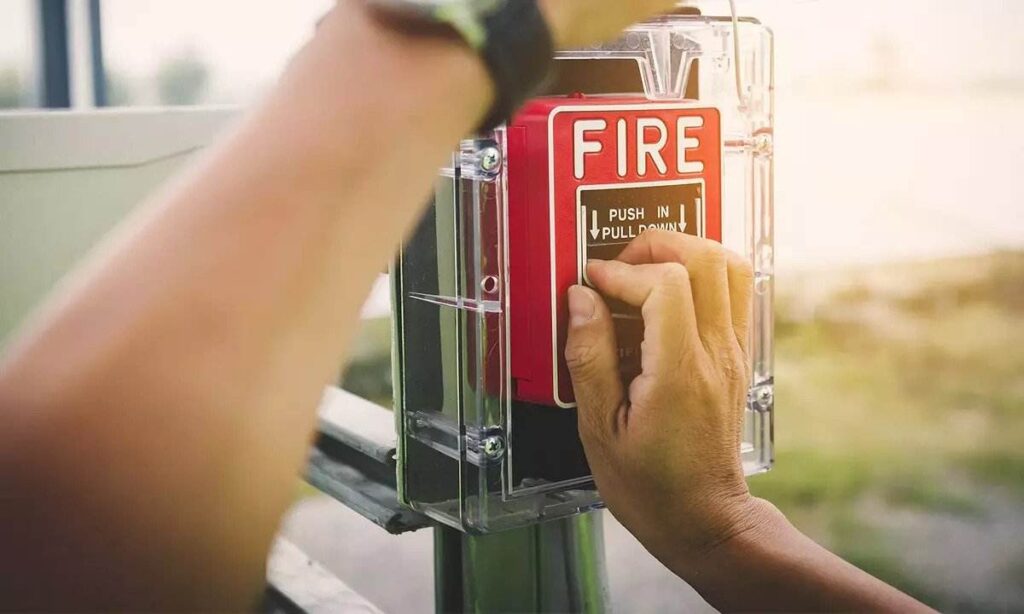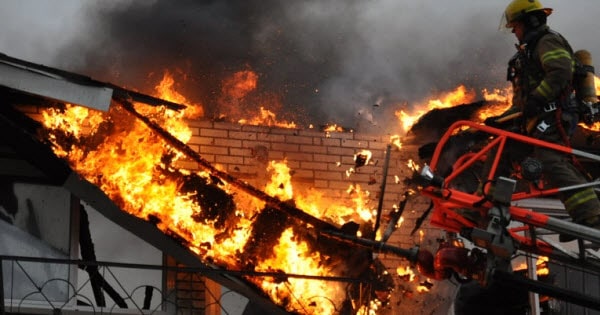Blogs
How to Minimize Fire Damage Before Professionals Arrive

A sudden fire outbreak can be a harrowing experience, leaving devastation in its wake. In the face of such a crisis, every second counts, and taking immediate action can significantly minimize the damage before professional help arrives. Whether it’s a residential or commercial setting, knowing how to respond effectively is crucial. In this guide, Instensa Dry will help you explore practical steps and strategies to minimize fire damage, empowering individuals to protect lives, property, and cherished possessions in those critical moments before the professionals take over.
Understanding the Immediate Threat:
In the blink of an eye, the tranquility of a home or workplace can be shattered by the ominous roar of flames. A fire outbreak presents an immediate and life-threatening situation, demanding swift and calculated responses. As the tendrils of smoke snake through the air, and the heat intensifies, individuals are faced with a critical task—to ensure the safety of themselves and others while grappling with the urgency of protecting property. In the following sections, we delve into the crucial first steps to be taken in the chaotic moments when a fire erupts. Understanding the immediate threat is paramount; it forms the foundation upon which effective and decisive action can be built. From evacuation protocols to the judicious use of fire extinguishers, this guide illuminates the path to safety and preservation, offering insights into how to navigate the tumultuous onset of a fire emergency.

Step 1: Ensure Safety First
When confronted with the raging turmoil of a fire, the first and foremost priority is unequivocally the safety of all individuals within the vicinity. In the crucible of a fire emergency, every second counts, and a clear-headed approach can make the difference between catastrophe and a controlled response. This initial step encompasses a series of crucial actions, each aimed at preserving life and minimizing the risk of harm. From a prompt evacuation to the judicious use of fire extinguishers, let’s delve into the pivotal elements of ensuring safety in the face of an immediate threat. These measures not only buy precious moments for professional help to arrive but form the bedrock of a well-executed emergency response.
Step 2: Mitigate Smoke and Heat Damage
In the aftermath of the initial chaos that ensues during a fire emergency, the battle against devastation continues. While the flames may have been the primary aggressor, the insidious spread of smoke and heat poses its own set of challenges. Actively mitigating smoke and heat damage becomes paramount in safeguarding both lives and property. This step involves a series of strategic measures aimed at curbing the secondary effects of a fire, limiting its ability to wreak havoc beyond the initial point of ignition. From closing doors and windows to employing ventilation strategies, this segment of our guide explores the practical steps that can be taken to navigate the aftermath and regain control over the situation. It is a critical phase where decisive actions can significantly influence the extent of damage before professional assistance arrives.
Step 3: Guard Against Water Damage
As the flames recede and the echoes of chaos begin to subside, a new adversary emerges in the aftermath of a fire emergency – water damage. While firefighting efforts are essential for quelling the blaze, the water used in this process can pose a substantial threat to property and belongings. Guarding against water damage becomes a crucial step in the comprehensive strategy to minimize the overall impact of a fire incident. This step involves thoughtful actions to prevent further harm, including shutting off utilities, covering belongings, and strategically sealing vulnerable points. In this section, we unravel the strategic measures that can be employed to shield against the often-overlooked consequences of water damage, ensuring a more robust recovery process.
Step 4: Protect Valuables
In the aftermath of a fire, the immediate concern extends beyond extinguishing flames or minimizing secondary damages—it delves into the preservation of irreplaceable and cherished possessions. Step 4 involves a crucial and often emotional task: protecting valuables. As the smoke clears, the urgency to salvage what can be salvaged takes center stage. From essential documents to family heirlooms, this step requires a delicate balance between safety and the preservation of tangible memories. In the following section, we explore practical measures to secure important items amidst the chaos, offering guidance on safeguarding valuables in the face of potential loss. This step not only contributes to the immediate well-being of individuals affected by the fire but also forms a pivotal aspect of the recovery process.
Step 5: Communication and Coordination
In the aftermath of a fire, effective communication and coordinated efforts play a paramount role in the journey towards recovery. Step 5 is a pivotal phase where individuals affected by the fire must engage in proactive measures to communicate with relevant entities and coordinate essential tasks. From notifying insurance providers to meticulously documenting the damage, this step is integral to streamlining the recovery process. In this section, we unravel the importance of clear communication, the steps to inform the necessary stakeholders, and the significance of documentation for insurance claims. By mastering this phase, individuals can lay a solid foundation for the comprehensive restoration of both property and peace of mind.

Step 6: Post-Fire Cleanup Preparation
As the flames yield to the persistent efforts of firefighters, the aftermath of a fire reveals a landscape altered by destruction. Step 6 involves preparing for the crucial phase of post-fire cleanup, a pivotal stage in the journey towards renewal. Beyond the immediate response to the emergency, the focus shifts to orchestrating a comprehensive cleanup strategy, setting the stage for the restoration of normalcy. From securing temporary shelter to coordinating with restoration professionals, this step encompasses measures that bridge the gap between immediate response and long-term recovery. In this section, we explore the strategic actions individuals can take to prepare for the challenging yet transformative process of post-fire cleanup. By navigating this phase with foresight and resilience, affected individuals can lay the groundwork for a new beginning.
Conclusion:
In the aftermath of a fire, the immediate actions you take can make a significant difference in minimizing the extent of the damage. Prioritizing safety, mitigating further risks, and preparing for the arrival of professionals are crucial steps in protecting lives and property. By following these practical guidelines, individuals can empower themselves to respond effectively to a fire emergency and lay the groundwork for a smoother recovery process. Remember, while these steps can help in the short term, always rely on the expertise of fire professionals for a comprehensive assessment and restoration of your property.
FAQ’s
How do you deal with fire damage?
Deal with fire damage by ensuring immediate evacuation for safety, then mitigate further harm by closing doors/windows, shutting off utilities, and protecting valuables before communicating with insurance and preparing for post-fire cleanup.\
What are the don’ts after a fire?
After a fire, don’t re-enter the property until it’s declared safe by authorities. Avoid touching or cleaning fire-damaged items without professional guidance to prevent potential health risks, and refrain from turning on utilities until they’re inspected for safety.
What to do when there is a fire?
In case of a fire, prioritize immediate evacuation, call emergency services, and use fire extinguishers if safe. Avoid re-entering until authorities declare it safe, and follow their guidance for a thorough assessment and recovery.
What to do before the fire?
Before a fire, create an emergency plan, install smoke detectors, and conduct regular fire drills. Safeguard valuables by storing important documents in a fire-resistant container and maintaining a defensible space around your property.
What are major causes of fire damage?
Major causes of fire damage include electrical malfunctions, cooking accidents, and heating system failures. Human negligence, faulty wiring, and flammable materials contribute significantly to the risk of fire incidents.

